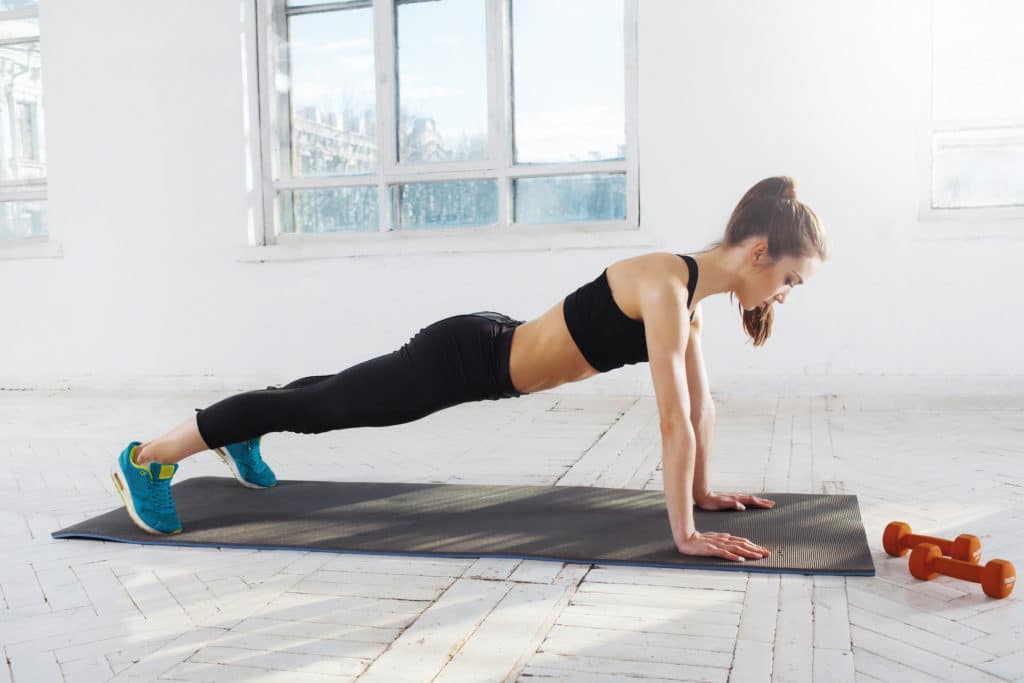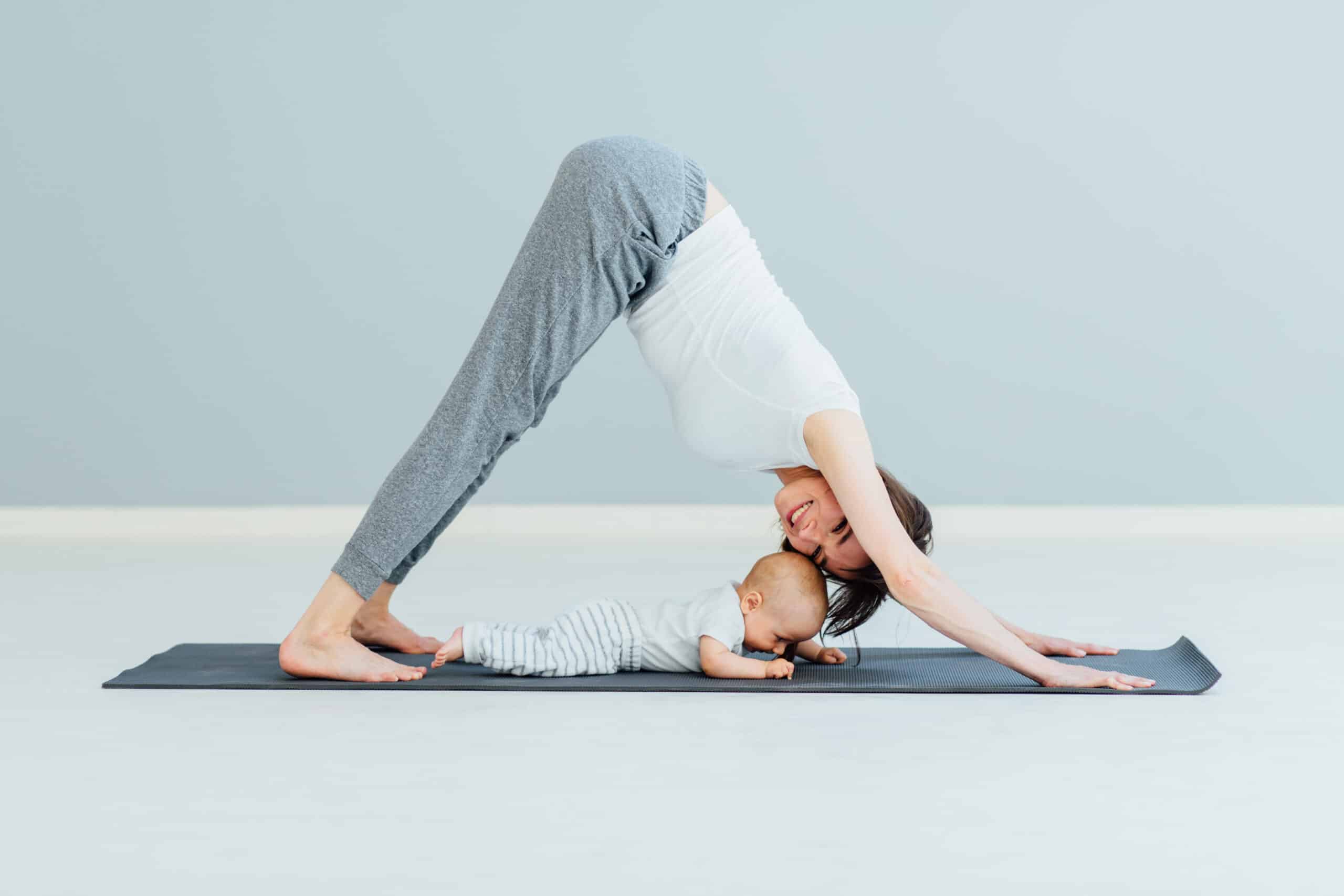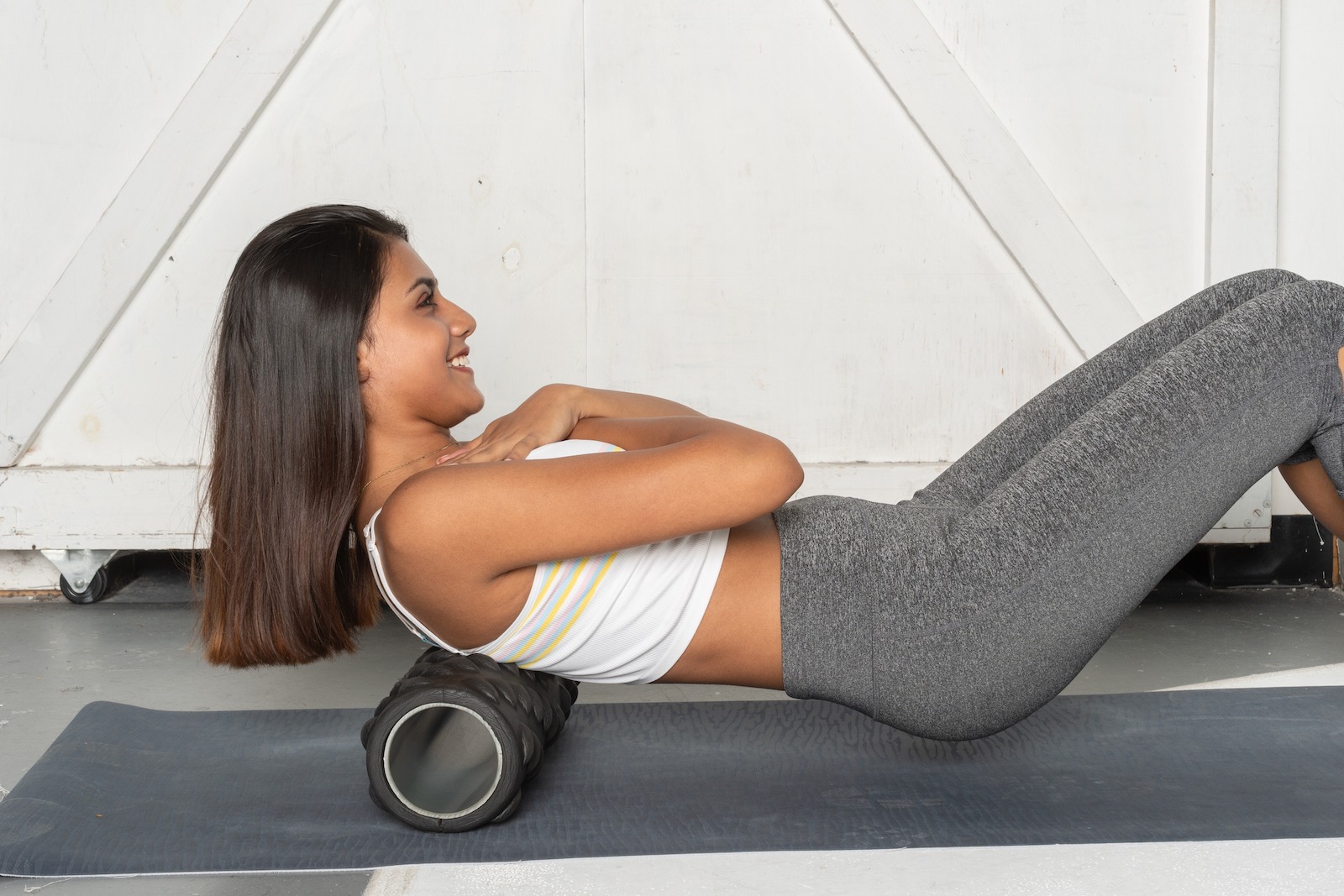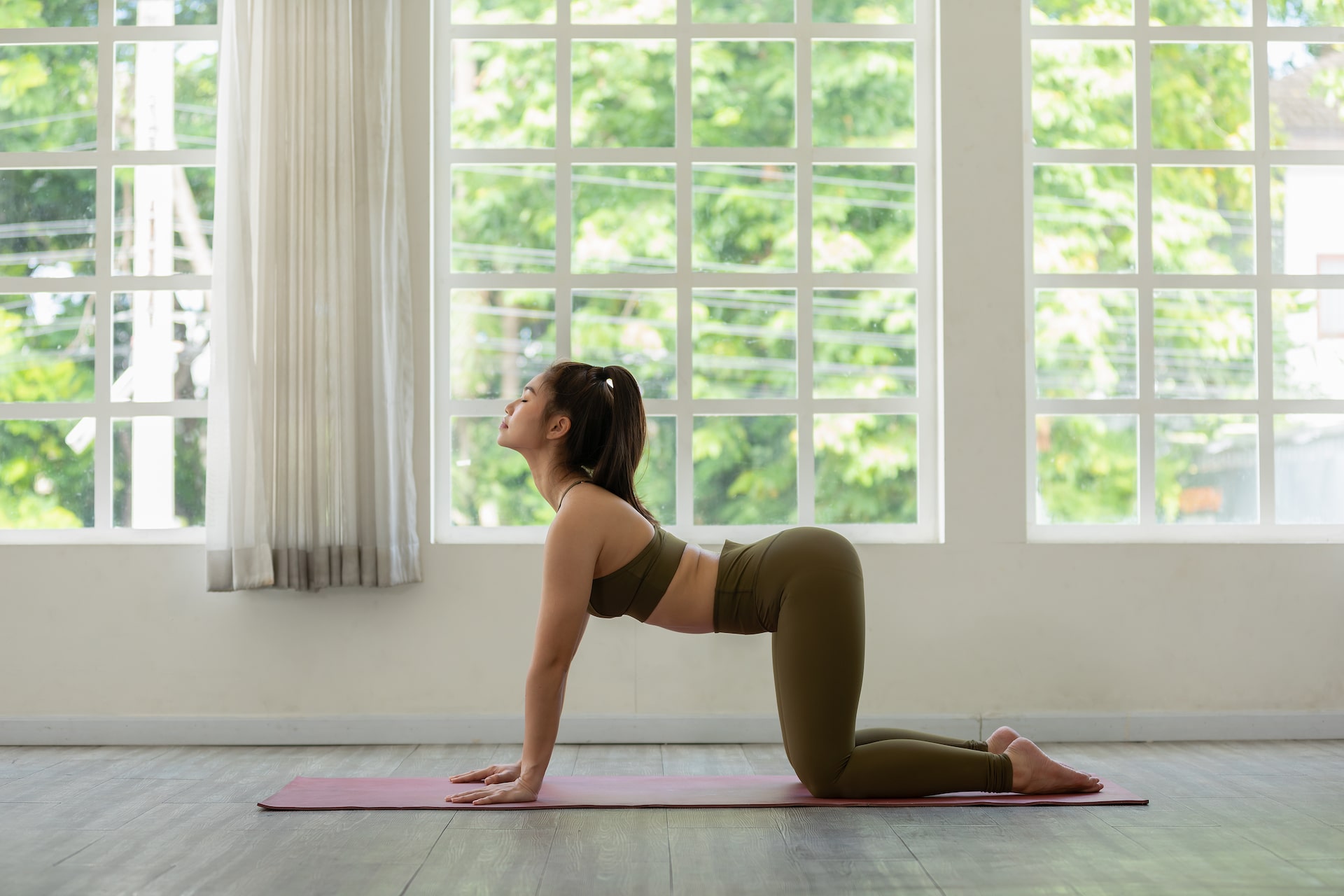The Best Short Cardio Workouts For When You’re Short on Time
A cardio workout is another name for an aerobic workout, which is exercise that is fueled by oxygen, and that uses large muscles continuously in a rhythmic motion. It’s also incredibly healthy for you. You can start reaping the major health benefits of this sweat sesh immediately by adding short cardio workouts to your exercise regimen.
Benefits of Short Cardio Workouts
Aerobic exercise has been shown to have many health benefits. It’s great for your ticker and lung function with the power to lower blood pressure and your resting heart rate. If that’s not enough, it also has some amazing anti-inflammatory abilities.
According to the CDC, heart disease is the leading cause of death in the U.S. and one of the primary risk factors for it is inactivity. So, what are you waiting for? Get out there and get your cardio on!
What Are Some Cardio Exercises?
Moderate-intensity cardio exercise can include:
- Quick walking
- Swimming
- Dancing
- Gentle cycling
Vigorous-intensity cardio exercise can include:
- Running
- More rigorous cycling
- Sports
There are also high-intensity anaerobic exercises that can provide you with similar cardiovascular benefits, such as HIIT (high intensity interval training), sprints, SIT (sprint interval training, more on this later!) and Tabata.
RELATED: 3 Short HIIT Workouts To Improve Your Fitness and Save You Time
How Much Cardio Should I Do Each Week?
The American Heart Association recommends that adults get 150 minutes of moderate-intensity exercise or 75 minutes of vigorous-intensity exercise each week. This breaks down to about 30 minutes of moderate intensity workouts five days a week, or 15 minutes of vigorous intensity exercise five days a week.
You might not have time to get in a 30-minute aerobic workout every day, but the good news is that you can get essentially the same cardiovascular benefits from a shorter workout that is more intense. Research shows that shorter, higher-intensity workouts can elicit many of the same benefits as longer-form moderate-intensity exercise.
Elevating Your Heart Rate During Short Cardio Workouts
The key to adding intensity to your short cardio workouts is to make sure that you are properly cranking up that heart rate. The recommended heart rate for a moderate-intensity workout is about 64% to 76% of your maximum heart rate. The recommended heart rate for vigorous-intensity workouts is 77% to 93% of your maximum heart rate, and the recommended heart rate for high-intensity intervals is 85% to 95% of your maximum heart rate during the interval periods.
Here is how you can calculate your estimated target heart rate for your workout:
For moderate-intensity cardio: 220 minus [your age] multiplied by .64 to .76 (64% to 76% of your max heart rate).
For vigorous-intensity cardio: 220 minus [your age] multiplied by .77 to .93 (77% to 93% of your max heart rate).
For high-intensity intervals: 220 minus [your age] multiplied by .85 to .95 (85% to 95% of your max heart rate).
You can measure your heart rate with a smart watch or chest strap, or manually by placing two fingers on a pulse point on your neck or wrist. Start a timer on your phone or watch, measure how many beats you feel in 6 seconds and then multiply that number by 10. This number will give you your heart beats per minute.
Pro tips: Make sure to check with your doctor before starting a cardio workout program, especially if you have a diagnosed heart condition or are at high risk for heart disease.
And don’t forget to warm up! Engage in light movement such as jogging in place or walking lunges for at least five minutes before starting your workout. This helps prepare your body for movement and prevent injury.
9 Short Cardio Workouts that Work
Here are nine short cardio workouts that will get your heart pumping!
1. Shorter Cardio Workouts

Three 10-minute sessions of moderate-intensity cardio
The U.S. exercise guidelines recommend that you engage in moderate-intensity exercise for about 30 minutes a day. If you don’t have time to exercise for 30 minutes continuously, you can always break your cardio workout into three 10-minute sessions. This could look like a 10-minute walk or jog before work, again at lunch and another at the end of the day.
15-minute vigorous-intensity cardio
You can engage in your favorite cardio workout such as running, cycling or swimming for 15 minutes, five days a week as long as you keep your heart rate between 77% to 93% of your maximum heart rate.
2. Sprints

One way to increase the intensity of your cardio workout (and therefore decrease the time needed to see the benefits), is to add speed work to them your workouts. Sprints are a form of interval training that can elicit the same heart-healthy benefits as longer-form cardio workouts. There are a couple of common methods for adding sprints to your workout.
Note: If at any time you feel chest pain, uncharacteristic breathing difficulties or feel dizzy or faint, stop the workout and call your doctor.
Fartlek
Fartlek is a Swedish running term that translates to something along the lines of “speed play.” Fartleks involve intervals of moderate- and high-intensity movement and have been shown to improve V02 max, a measure of cardiovascular fitness. Fartleks are usually performed in running or cycling.
19-minute Fartlek workout:
5-minute warmup walk / light jog
3-minute jog/cycle at moderate intensity (64% – 77% of your maximum heart rate).
1-minute run/cycle at a high intensity (85% – 95% of your maximum heart rate).
3-minute jog/cycle at moderate intensity.
1-minute run/cycle at a high intensity.
3-minute jog/cycle at a moderate intensity.
1-minute run/cycle at a high intensity.
2-minute cool down jog
SIT
You have probably heard of HIIT, but have you heard of SIT? SIT stands for sprint interval training and involves very short bursts of movement followed by slightly longer periods of rest. There is evidence that these sprint workouts deliver many of the same cardiovascular benefits as longer, moderate-intensity workouts.
22-minute sprint workout
5-minute warmup
30-second sprint, at max exertion
2-minute rest
30-second sprint, at max exertion
2-minute rest
30-second sprint, at max exertion
2-minute rest
30-second sprint, at max exertion
2-minute rest
30-second sprint, at max exertion
2-minute rest
30-second sprint, at max exertion
2-minute rest
2-minute cool down walk
3. Hill Intervals

Walking or running up hills elevates your heart rate. This can make a simple walk, jog or cycle into an interval workout. Similar to the concept of sprint work, you can shorten your cardio workouts without decreasing the benefits for your heart and lungs. This is done by adding intensity in the form of a hill climb. If you are on a cycle, row machine or treadmill, this effect can be mimicked by increasing the resistance or incline for interval periods.
15-minute hill interval workout (outside):
5-minute warmup
30-second hill sprint
Jog back down the hill
Repeat 5 times.
2.5-minute cool down
20-minute hill interval workout (treadmill):
Set the incline on your treadmill to 3.0 and warm-up for 5 minutes with a walk or slow jog.
Set the incline on your treadmill to 8.0 and walk / run as quickly as you can safely for 1 minute.
Return your incline / resistance to 3.0 / low and jog or cycle for 3 minutes.
Set the incline on your treadmill to 8.0 and walk / run as quickly as you can safely for 1 minute.
Return your incline / resistance to 3.0 / low and jog or cycle for 3 minutes.
Set the incline on your treadmill to 8.0 and walk / run as quickly as you can safely for 1 minute.
Return your incline / resistance to 3.0 / low and jog or cycle for 3 minutes.
Set your incline to 0 and walk / gently jog to cool down for 3 minutes.
20-minute hill interval workout (cycle or row machine):
Set your cycle / row machine to a low resistance and warm-up slowly for 5 minutes.
Set your cycle / row machine to high resistance and cycle/row as quickly as you can safely for 1 minute.
Return your cycle / row machine to a low resistance and cycle/row for 3 minutes.
Set your cycle / row machine to high resistance and cycle/row as quickly as you can safely for 1 minute.
Return your cycle / row machine to a low resistance and cycle/row for 3 minutes.
Set your cycle / row machine to high resistance and cycle/row as quickly as you can safely for 1 minute.
Return your cycle / row machine to a low resistance and cycle/row for 3 minutes.
Set your cycle / row machine to a low resistance and cycle/row to cool down for 3 minutes.
4. HIIT Workouts

A popular way to get in a workout that benefits your cardiovascular system is by doing a short HIIT workout. HIIT stands for High Intensity Interval Training and has become a very popular stand-in for moderate-intensity exercise. There is extensive research that backs up its benefits for improving fitness. HIIT can be performed almost anywhere without equipment, making it an accessible alternative to longer-form exercise.
15-minute Full-Body HIIT workout
Perform each exercise for 30 seconds and then rest for 30 seconds, making sure that your heart rate is elevating to 85% – 95% of your maximum heart rate during the high-intensity periods.
5-minute warmup
30 seconds bicycle crunch
30 seconds rest
30 seconds jump squats
30 seconds rest
30 seconds mountain climbers
30 seconds rest
30 seconds burpees
30 seconds rest
30 seconds mountain climbers
30 seconds rest
30 seconds jump squats
30 seconds rest
30 seconds bicycle crunch
30 seconds rest
3-minute cool down stretch
How to perform a bicycle crunch:
1. Start lying on your back with your knees bent.
2. Place your hands on the base of your skull. Exhale and lift your chest.
3. Lift your knees off of the floor, pulling them into your chest.
4. On the exhale, touch your right elbow to your left knee, letting your right leg extend in front of you where it will be hovering off the floor.
5. Switch legs on every exhale. Perform this movement quickly to keep your heart rate up.
How to perform burpees:
1. Stand with your feet set apart, a bit wider than shoulder width. Point your feet straight forward, or slightly turned out.
2. Engage your glutes (squeeze!) and drive your heels into the ground. Be sure to track your knees over your feet, preventing them from going too far in or out.
3. Slowly lower down, bending your knees as if you are sitting down in a chair behind you, keeping your weight in the center of your foot.
4. Drop your hands to the floor, and jump back into a plank position.
5. Engage your core and keep it tight.
6. Create a straight line from your head to upper back to glutes.
7. Jump your feet back into a squat position.
8. Jump as high as you can, extending your arms to the ceiling and your toes to the ground (you can also do this with an exaggerated standing motion if jumping is painful) and move straight into the next burpee.
4-Minute Tabata Workout
The Tabata protocol is a short and popular format for HIIT workouts. There is a lot of research to back up Tabata as an effective way to increase aerobic capacity. Tabata workouts can be done in as little as 4 minutes (but don’t forget your warm up!) or can be repeated to make it a longer workout.
The Tabata protocol is a simple format, which consists of 20 seconds of high intensity movement followed by 10 seconds of rest, repeated four times.
Here is a 4-Minute Tabata Workout
20 seconds jump squats, performed at your highest effort.
10 seconds of rest.
20 seconds mountain climbers, performed at your highest effort.
10 seconds of rest.
Repeat 4 times
How to perform mountain climbers:
1. Start lying on your stomach with your hands just outside your shoulders and your fingers spread apart.
2. Set your shoulders by thinking about screwing your hands into the ground.
3. Activate your glutes as you straighten one leg at a time.
4. Engage your core and keep it tight.
5. Create a straight line from your head to upper back to glutes.
6. Begin to “climb” your legs by quickly bringing your knee towards your nose
7. Switch legs rapidly until time is up.
How to perform jump squats:
1. Stand with your feet set apart, a bit wider than shoulder width. Point your feet straight forward, or slightly turned out.
2. Engage your glutes (squeeze!) and drive your heels into the ground. Be sure to track your knees over your feet, preventing them from going too far in or out.
3. Keep your chest tall and core engaged while clasping your hands and reaching forward to help you sit back into your hips.
4. Slowly lower down, bending your knees as if you are sitting down in a chair behind you, keeping your weight in the center of your foot.
5. When you reach the bottom, spring into a jump, pointing your toes towards the floor.
6. Land back in the bottom of your squat position.
7. Repeat this movement continuously for 20 seconds.
Note: If a jump squat feels too intense or painful, you can swap out this movement for fast-paced squats.
These are just a few recommendations for how to get in a workout that supports heart health if you don’t have a lot of time on your hands, but try not to overthink it. If you only have 10 minutes of spare time, move your body in a way that you enjoy for 10 minutes and simply amplify the intensity to increase the benefits to your cardiovascular health.
(Images: Shutterstock)
RECENT ARTICLES

Want a sneak peek inside the program?
Get FREE access to some of the core training materials that make up our signature program – Become a Nutrition Coach.
Get Access"*" indicates required fields
 Sweat Often
Sweat Often













































































































































































































































































































































































































































































































































































































































































































































































































































































































































































































































































































































































































































































































































































































































